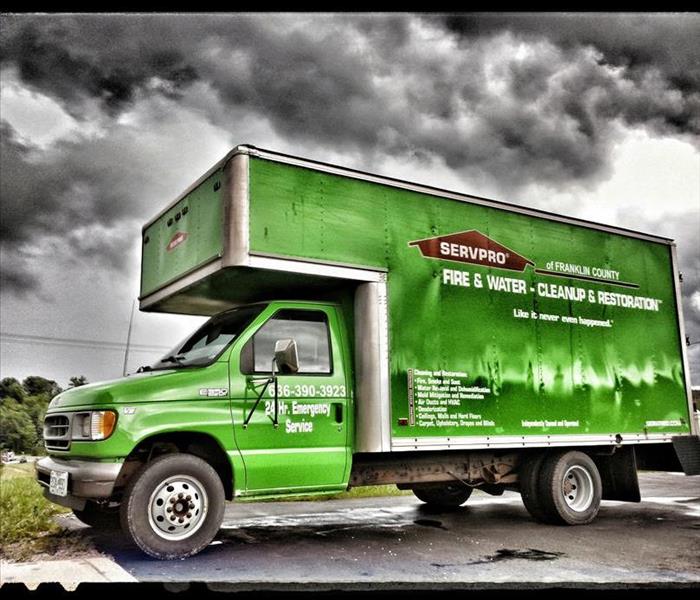April Showers bring May Floods??
5/19/2015 (Permalink)
The first two weeks of April brought about quite a bit of rain and severe weather for our area. Tuesday April 7th brought heavy rains washing out streets, culverts, retaining walls and yards. Many houses and residences were affected including the Sleepy Hollow Mobile Home Park in Villa Ridge which had to be evacuated twice due to high-water. Also a lot of unlucky homeowners came home to find very wet basements.
Those two weeks became a very busy time for us. Basement floods are a particularly difficult to mitigate. First we have to ask, “how did the water get there” ? With almost all insurance policies if the water leaked or seeped through the foundation walls it probably will not be covered. If it came up through the sump or the sump failed, usually it will take a special endorsement to provide coverage. The same is true if the water came up through the sewer drain. If there is no coverage, the homeowner is left paying the mitigation bill out of pocket.
After insurance coverage is determined our highly trained IICRC certified technicians come up with a plan of action to dry out the basement. Determining the class of water is one of our first steps in developing the drying plan. Listed below are the classifications we use:
•Category 1. This is liquid from a clean and sanitary source, such as faucets, toilet tanks, drinking fountains, etc. But, category one can quickly degrade into category two.
•Category 2. This category of liquid used to be called gray water, and is described as having a level of contaminates that may cause illness or discomfort if ingested. Sources include dishwasher or washing machine overflows, flush from sink drains, and toilet overflow with some urine but not feces.
•Category 3. This is the worst classification and is grossly unsanitary. It could cause severe illness or death if ingested. It used to be called black water, and sources include sewer backup, flooding from rivers or streams, toilet overflow with feces, and stagnant liquid that has begun to support bacterial growth.
Typically these type of losses will be either category 2 or 3. The water is usually slightly or grossly contaminated. With a category 2 or 3 loss we will use a air scrubber to clean the air and workers will wear personal protection and we will apply anti-microbial agents to protect everyone and to obtain a clean environment.
Next we usually have to deal with a lot of personal property. After all it’s a basement and where else do you store stuff?? We determine what is salvageable and unsalvageable, documenting and disposing the unsalvageable items and cleaning and moving the salvageable items. Once we have the contents out of the way, we are ready to extract as much water as possible. We use powerful truck mounted machines to extract the water. Our moisture meters are used to determine what’s wet and how wet everything is. We make sure to document all of this information on our iPad’s so that we have a thorough drying record. Next we determine what structural items can be saved and what need to be removed. If the category of water is determined to be 3, all porous items such as carpet and drywall would need to be removed and disposed of. With category 2 more structural items can be saved, but they still need to be properly cleaned and dried. Lastly we are ready to set drying equipment. With the use of our iPad’s we determine the amount of air movers and dehumidifiers required to adequately dry the space. Air movers will force the moisture out of the structure and into the air. The dehumidifiers take the moisture away. We continue to monitor daily until moisture levels are normal and equipment is ready to be removed.
Once everything is dry, we package up our completed estimate, drying logs, inventories, pictures, etc. and forward them to the adjuster or paying customer. The drying process usually takes 3-5 days and we strive to get our paperwork submitted within 48 hours of job completion. Finally, our construction division is here to put everything back together for you. We provide a detailed estimated to the adjuster or paying customer and make sure everything is approved and agreed upon in advance.
After we are done, we don’t just leave you. We provide a yearlong warranty and we are always here for consultation or just to answer questions.
If you have any questions about water damage or any of our other services please feel free to ask. Until next time, stay dry and stay green!
-Jerry



 24/7 Emergency Service
24/7 Emergency Service
